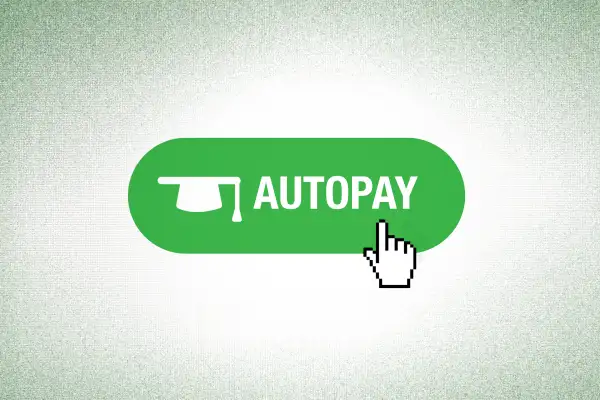Here's Why You Should Consider Enrolling in Autopay Before Student Loan Payments Resume

With yet another extension of the freeze on federal student loan payments, it may be tempting to simply push any and all thoughts of your debt out of mind until May 1 approaches.
But these extra three months of a break on payments could serve as a critical period to prepare for their return, something President Biden urged borrowers to do in announcing the extension at the end of December. Because one thing is (almost) certain: student loan payments will eventually come back. And before they do, it may be a good idea to sign up for autopay.
Here’s how to tell if it’s a good idea for you.
Pros and cons of autopay for student loans
After roughly two years in an automatic forbearance, it can be easy to fall out of the habit of making student loan payments every month. Autopay, or automatic debit payments, can be a good option for borrowers who want to "set it and forget it" with one less bill to think about each month, according to Leslie H. Tayne, a financial attorney and founder of Tayne Law Group.
“If you don't have autopay set up, you risk forgetting to make a student loan payment, which could result in penalties and credit blemishes,” she says.
Another reason to enroll: You could get a lower interest rate. Most student loan servicers offer a discount of 0.25% to borrowers who pay their bills automatically. That’s the case for both federal and private loans. It might not seem like a whole lot — and it’s not, really — but the savings can add up over time. That’s especially true if you have a large amount of debt.
For example, say you owe $100,000 with an interest rate of 4% and have 10 years to pay it off. Your monthly payment would be $1,012 and you’d pay a total of $21,494 in interest over the life of your loan. By knocking the rate down to 3.75%, your payments would drop slightly to $1,001, but you’d save $1,421 in interest overall. Every bit helps.
Keep in mind that autopay can backfire if you aren’t careful. Your student loan payment will be withdrawn from your designated bank account, regardless of whether you have sufficient funds in there, warns Rebecca Safier, a certified student loan counselor and debt expert with Student Loan Hero. So if your balance is running low, you could end up overdrafting and paying a hefty fee.
“If you’re worried you don’t have enough money in your bank account each month to cover your living expenses, autopay might not be the best choice,” Safier says, adding that if you struggle to keep up on your student loan bill, it could be worth looking into options to lower or pause payments, such as applying for income-driven repayment, forbearance or deferment.
If you previously enrolled in autopay, but later on decide that it isn’t right for you, be sure to opt out as early as possible and verify when you’ll revert to manual payments. Tayne noted that loan servicers often need 5 to 10 business days to turn off autopay, so they may try to take payment from the old account if you don't make the change early enough before your payment date.
What if I was enrolled in autopay before the pandemic forbearance?
Don’t assume your student loan payments will resume on autopay when the emergency forbearance ends.
Even if you were set up on autopay before, if you enrolled prior to March 13, 2020, you’ll need to log onto your servicer’s website and opt back in. Updating your autopay preferences shouldn't change when your payments resume, but it's always smart to double check, says Betsy Mayotte, the president and founder of The Institute of Student Loan Advisors (TISLA).
Also keep in mind that your student loan servicer may have changed recently. FedLoan, Navient and Granite State Management & Resources are all exiting the loan servicing space and switching to new systems, so if your loans were serviced by any of these organizations, you’ll need to enroll in autopay with your new servicer.
“In this case, it’s especially important to check in on your loans and make sure your student loan payments are set up correctly, since the new loan servicer might not have your information or payment preferences,” Safier says. You can sign into your Federal Student Aid dashboard to find out who your loan servicer is.
While you’re at it, double check your payment date so you’re not caught off-guard (or underfunded) when your student loan payment is withdrawn in May. Mayotte says that you should be able to see your due date by logging into your student loan account. Note that this information may not post to your account until closer to the end of the pause. Mayotte expects that it will be the same day of the month as it was prior to the COVID-19 waivers, but it’s always a good idea to verify. And if you need to change the due date, she notes that in most cases, you can do so by calling your servicer.
More from Money:
3 Tips to Lower Your Student Loan Debt This Year
Down Payment vs. Student Loans: How to Decide Where to Put Your Money
Watch Out: These High-Risk Investments Will Be All the Rage in 2022
